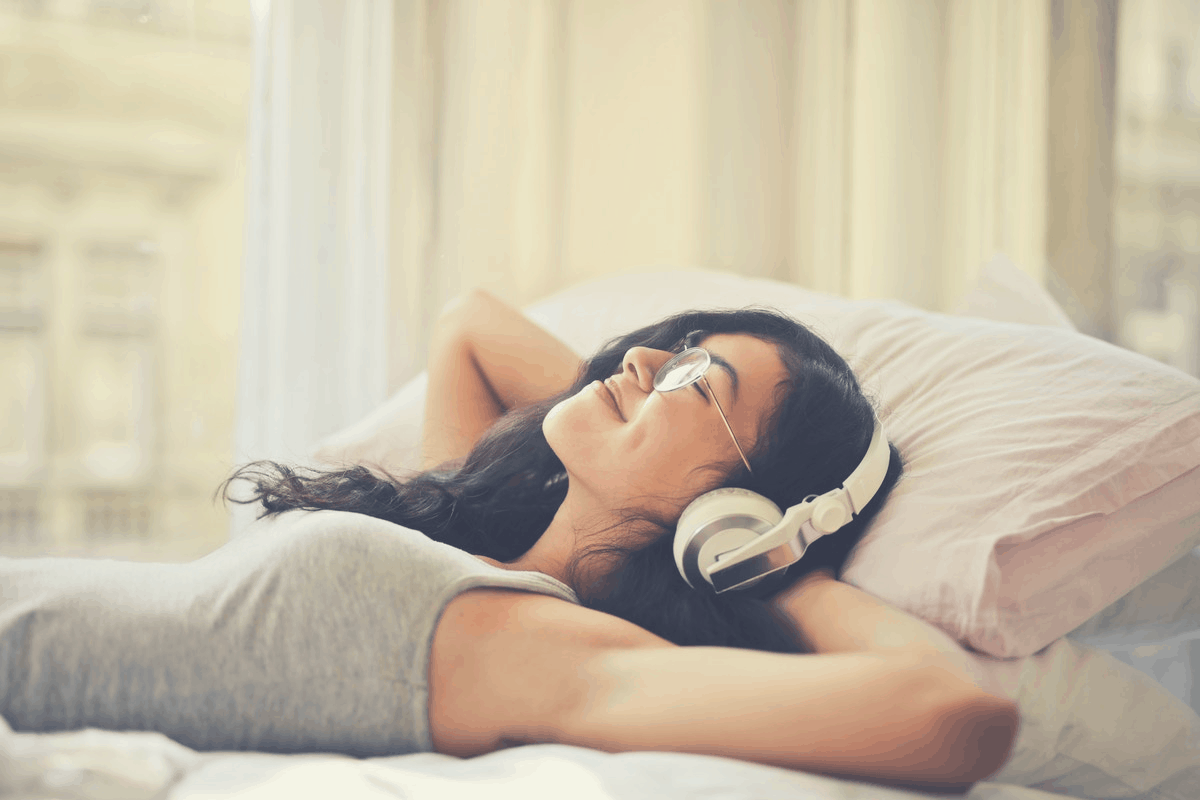Do you struggle to nod off due to facial pain and other symptoms associated with TMJ? You’re not alone. TMJ is a common medical condition that can affect the ability to get the amount of shuteye you deserve.
It occurs when the joint that connects the upper jaw to the lower jaw functions poorly. Known as the Tempro-Mandibular Joint, the delicate nature means the slightest damage can lead to depressing results at bedtime.
How do you Sleep With TMJ?
Sleeping with TMJ can be extremely difficult but not impossible as long as you’re willing to put in some work. Here are a few tried and tested techniques that can provide relaxing shuteye despite suffering from the condition.
1. Speak to Your Chiropractor

A licensed chiropractor should be the first point of call for anyone struggling to hit Dreamland at night due to the complications from TMJ. A chiropractor can arrange the muscles in the jaw and surrounding areas resulting in tension release and pain relief.
This can offer long-term nighttime comforts that may have a tremendous impact on the quality of your sleep. A quick search on Google can reveal a list of chiropractors in your area. Alternatively, your surgeon can refer an experienced professional in the field as long as you’re willing to ask.
This non-surgical and non-medication procedure can be a great alternative for patients who are uncomfortable with undergoing the knife or taking opiate-based pain medications. Not only can a chiropractic procedure improve sleep but it may also enhance the overall quality of life by alleviating headaches as well as the discomfort associated with speaking or chewing.
2. Retrain the Tongue
One of the common problems TMJ patients experience is a pushback of the tongue on the teeth during sleep. Unfortunately, this action can lead to tense jaw muscles and severe discomfort in surrounding areas.
Since this may be an involuntary action that occurs during sleep, it can be a hard habit to stop.
The good news is that retraining the tongue to stay separate from the teeth throughout the night can take a lot of strain off the jaw, leading to a more restful sleep.
3. Get a TMJ Pillow
A TMJ pillow can be a great addition to the bedroom whether you’ve been officially diagnosed with the condition or been suffering symptoms such as chronic jaw and facial pain, especially at night. The good news is that these small, rounded orthopedic pillows can be placed under the neck to ensure the right position overnight.
This may alleviate the pressure on the jaws and related muscles, leading to significant comforts that can make good sleep easier to achieve. A visit to Amazon can reveal some of the best pillows for TMJ sufferers. Just don’t forget to read the independent reviews from other verified buyers about their experiences with specific models.
4. Get the Right Mattress
The quality of your sleeping surface can be the difference between peaceful rest and insomnia every night. A mattress that fails to provide adequate results may increase the pressure on the whole body including the face and jaws.
Memory foam mattresses, in particular, can be a great fit for TMJ sufferers thanks to their natural body-conforming properties. Getting a medium-firm model should work well in most cases.
If your current mattress sags in the middle or showing signs of significant indentations, ordering a new one may be the way to go to enjoy nighttime rest again.
The Sweetnight 10-inch Queen Mattress from Amazon offers cool sleeping all night long. It provides world-class body contouring as well as motion isolation to transform the whole nighttime experience. It is highly recommended for anyone suffering from any form of chronic body pain.
5. Get An Adjustable Base

An adjustable bed can be lifesaving for TMJ sufferers due to their flexible nature. Sure, it may take a few trials to figure out the right sleeping angle that offers minimal strain in the face, particularly the jaws.
Once that is nabbed, the long wait for memorable nights may be over. These beds can be a great fit for anyone who loves watching TV or reading in bed because they’re flexible enough to ensure minimal strain on any part of the body.
Another positive of adjustable bases is that natural stomach and side sleepers may find it easier to switch to the back.
The LUCID L300 Adjustable Bed Base with 12-inch Memory Foam Mattress from Amazon is the highest-selling model online right now. It is easy to assemble even among complete beginners and ships with an adjustable base and 12-inch mattress.
6. Take a Warm Shower
Have you ever experienced the magical effects of warm showers on a struggling night? It can be the perfect remedy to drift off to sleep without delay. Experts recommend taking the shower an hour or two before your regular bedtime.
As ironic as it may sound, a warm shower can cool down the body temperature rapidly. It works by instantly increasing the body temperature which drops off over time leading to magical cooling effects that can make anyone doze off quicker.
The benefits of warm showers also include spending more time in bed which can be the key to a productive day at work or school.
7. Bedtime Yoga
Light yoga routines at bedtime can be great for TMJ sufferers. Yoga typically involves specific poses and stretches that can get the blood flowing in and around the neck and face.
This may release tension in the affected areas, enabling you to catch some Zs without problems. According to experts, a few of the best yoga poses for jaw tension include:
- Unlocking the Jaw
- Vamping Pose
- Downward Facing Cobra
- Neck Strengthener
- Singing Snake
- Head Hammock Flexion and Cervical Extension
The styles listed above can be practiced and mastered during yoga classes among regular attendants The good news is that these poses can be studied and perfected on YouTube as well. Apart from yoga, circling the jaw periodically throughout the day can also release tense muscles.
The BalanceFrom GoYoga All-Purpose 1/2 Inch Extra Thick Anti-Tear Yoga Mat from Amazon is my go-to mat for doing yoga at home and the office. The 71-inch length and 24-inch width make it comfortable for people of all shapes and sizes. With 5-star reviews from over 21,000 buyers (and counting) on Amazon alone, you cannot afford to miss out on it.
8. Meditation
The typically idle bedtime environment may increase the tendency to get caught up in thoughts, especially negative ones. These thoughts can increase anxiety levels which may rob anyone of the ability to catch some Zs, especially after a stressful day.
Meditation can be a great way to refocus your attention on thoughts that may produce relaxing effects on the body. Mindful breathing, in particular, is one of the most proven meditative practices for battling insomnia.
Visualization, where a practitioner imagines being in a calm and relaxing environment such as enjoying the breeze from a lake alone or sitting in a calm place surrounded by beautiful mountains can be a powerful method to steer the mind away from negative thoughts.
9. Read a Book
Do you know why reading bedtime stories to kids has become such an important part of society? It is because it works! Reading interesting stories or anything at all at bedtime can calm the mind to exceptional levels.
The result is heavy eyes and dozing which eventually leads to a swift drifting off and deep sleep. Reading from a Kindle or a similar gadget can provide similar benefits for sleep if there are no books in sight.
However, the absence of a blue-emitting backlight means reading a traditional book or magazine may provide superior benefits compared to electronic gadgets.
10. Cool Down The Room Temperature
Mid to high room temperatures can rob anyone of the ability to sleep whether suffering from TMJ or not. As such, taking measures that may cool down bedroom temperature can be rewarding in many ways.
Remember, the best temperature for sleep ranges between 60-67 degrees, according to experts. An air conditioner or fan can help you achieve this range during the summer but sometimes opening the bedroom windows may be enough.
Also, keep an eye on the thermostat if your apartment has central air conditioning to adjust as and when necessary.
11. Get Rid of Distractive Background Noises

Background noises can be distractive for sleep in many ways. This may be especially true if you’re used to sleeping in whisper-quiet surroundings. Some of the best techniques to limit background noises include:
Turn off the TV: TVs in the bedroom can be a major source of noise particular at night when sounds travel faster. Try to limit your TV dependence at bedtime so you can switch it off to enjoy a quiet environment.
Soundproof Bedroom: Soundproofing the bedroom can be a smart way to limit nighttime noise if you live in a city center apartment or close to a major highway. Sealing the windows, in particular, can be the best way to enjoy quiet nights.
Wear Earbuds: Earbuds may block the noise in the environment from entering the ear. This can be beneficial if soundproofing the bedroom is inconvenient due to one reason or the other.
Noise-Canceling Headphones: Noise-canceling headphones can mute background noises from the ears. They’re highly recommended for anyone whose bedtime routine includes listening to music.
I personally use the Cowin E8 Active Noise-Canceling Headphones from Amazon to doze off in noisy environments. It features amazing technology that drowns out background noises so I can focus on listening to relaxing pleasant sounds for satisfying sleep.
12. Get Some Essential Oils
Essential oils can provide magical relaxation for the mind regardless of the level of stress you may be battling with. There are many different types of oils but the good news is that you can find bundles containing small-sized bottles of some of the most popular types.
Essential oils may be added to a bath or placed in a diffuser for dispersion throughout the bedroom. Inhaling these sweet-scented oils can quicken the time it takes to fall asleep as well as the quality and duration of the shuteye.
the Ultimate Aromatherapy Diffuser with Essential Oils from Amazon helps me sleep quicker and longer. Recommended by my best friend who suffers severe anxiety and depression, it is one of the most potent weapons for eliminating my post-breakup insomnia.
What Are the Symptoms of TMJ?
The fact that you may be struggling to get some shuteye does not necessarily mean it is related to TMJ. The most common symptoms of the condition include:
- Jaw opening and closing difficulties
- Chewing difficulties
- Teeth grinding and clenching
- Tension headaches
- Ear pain
- Facial, jaw, and shoulder pain
What Is The Best Sleeping Position for TMJ?
The best sleeping position for TMJ is to lie down on the back because the slightest pressure on the jaws, neck, head, and face can exacerbate the symptoms of the condition. This can make it harder to doze off, let alone get a good night of rest.
If you’ve always been a side or stomach sleeper, sticking to your natural position can make peaceful slumber hard to come by regardless of what treatment or remedy you may practice.
How To Switch From Stomach or Side Sleeping To The Back
Training yourself to gain some comfort while lying on the back can provide transformative effects on the body. Sure, this is something that cannot be achieved overnight, particularly among the most dedicated stomach sleepers. But, as long as you’re willing to put in the work, the seemingly impossible can become a reality.
Stack multiple pillows: You can start by stacking multiple pillows on each side of the body while lying on the back. In most cases, 2-3 pillows on each side should prevent accidental rolling over from the back to the stomach or side in the middle of the night. For restless sleepers who may accidentally kick off the pillows from the bed, tucking them under the sheets can be a smart move.
Sleep on the couch: Lying down on the couch overnight can come in handy for a natural side or stomach sleeper desperate to switch to the back. The limited dimensions mean little room to roll over onto another position once you settle on the back. Sure, this can take some getting used to. However, many people have reported positive results from this method so it is worth trying.
Place the arm properly: One of the biggest struggles new back sleepers face is where to place the arms during the night. But, the trick is to avoid raising the arms to the top of the head as that can increase the strain on the shoulders leading to pain in the morning.
Instead, alternate between placing the arms on the chest and on each side of the body to find the position that works best.
Conclusion
There may be no magic bullet for sleeping with TMJ but as long as you follow the tips outlined above, relief is on the way. Make sure to seek your doctor’s advice to be sure you’re not engaging in any actions that can aggravate the pain.
Hopefully, you can have a pleasant night from today!
